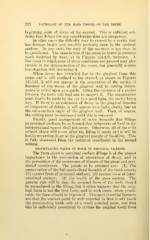Page 360 - My FlipBook
P. 360
222 PATHOLOGY OF THE HARD TISSUES OF THE TEETH. ;
beginning point of decay of the enamel. This is sufficient evi-
dence that delays for any considerable time are dangerous.
In other cases the difficulty may be caused by a cavity that
has become larger and possibly partially open to the occlusal
surface. In any such, the duty of the operator is too clear to
be questioned. The same is true if the cause be found in contacts
much flattened by wear, as in Figures 124-128, inclusive. A
few cases in which none of these conditions are present may give
trouble in the determination of the cause, but generally a close
investigation will determine it.
When decay has extended far to the gingival from this
cause and is still confined to the enamel, as shown in Figures
121-123, it will not appear in the excavation of the cavity, if
firmness of the tissue of the gingival wall to cutting instru-
ments is relied upon as a guide. Often the existence of a pocket
between the teeth will lead one to suspect it. The examination
must finally be made by the eye in a good light, the cavity being
dry. If there is an extension of decay to the gingival because
of lodgments of debris, it will appear as a light, chalky line on
the cavo-surface angle of the gingival wall. Then, of course,
the cutting must be continued until this is removed.
Finally, good management of cases demands that fillings
in proximal surfaces be so formed that lodgments of food in the
interproximal spaces shall not occur. Otherwise, all of the evils
related above will occur after the filling is made and it will be
lost by recurring decay at the gingival margin of the filling. This
is fully discussed from the technical standpoint in the second
volume.
PROPHYLACTIC VALUE OF FORM IN PROXIMAL FILLINGS.
The form given to proximal surface fillings is of the utmost
importance in the prevention of recurrence of decay, and in
the prevention of the occurrence of disease of the gums and peri-
dental membranes. The points to be attained are: (1) The
preservation of the full mesio-distal breadth of the tooth crown
(2) correct form of proximal surface; (3) correct form of inter-
proximal contact; (4) the health of the gum septum. The
general rule will be that the original form of the teeth should
be reproduced in the filling, but it often happens that the orig-
inal form is not the best form, and in such cases, when practi-
cable, the form should be improved. The most essential features
are that the contact point be well rounded so that it will touch
the proximating tooth only at a small rounded point, and that
this be sufficiently prominent to restore the original tooth form


